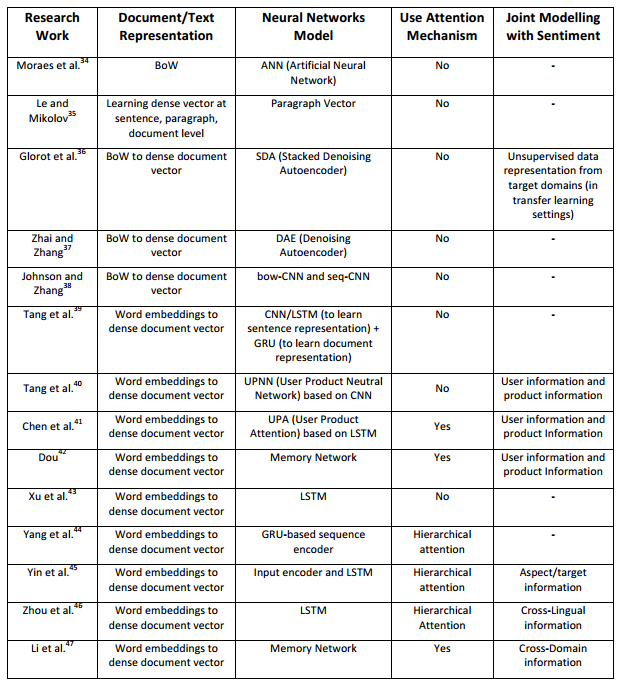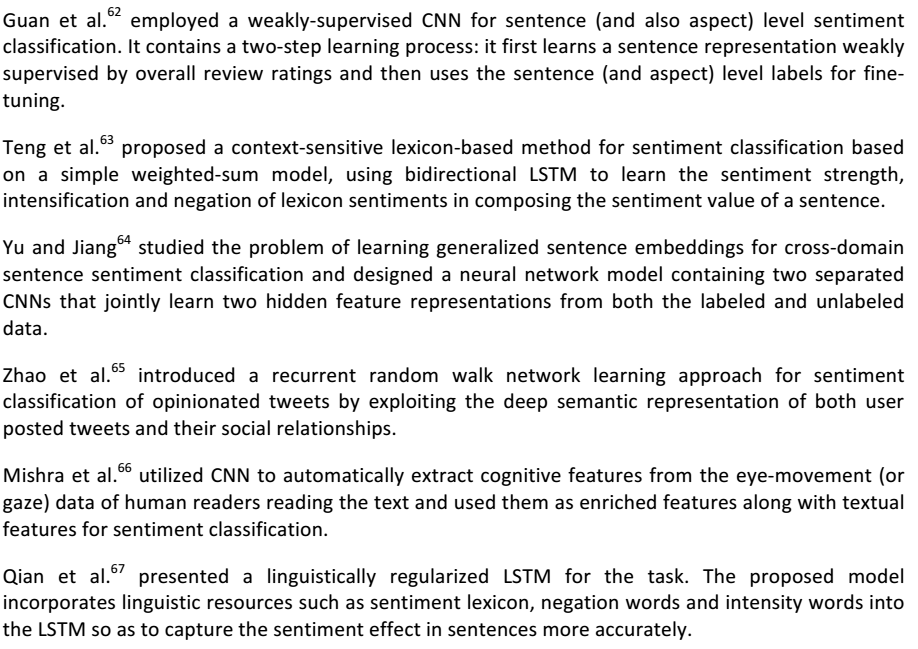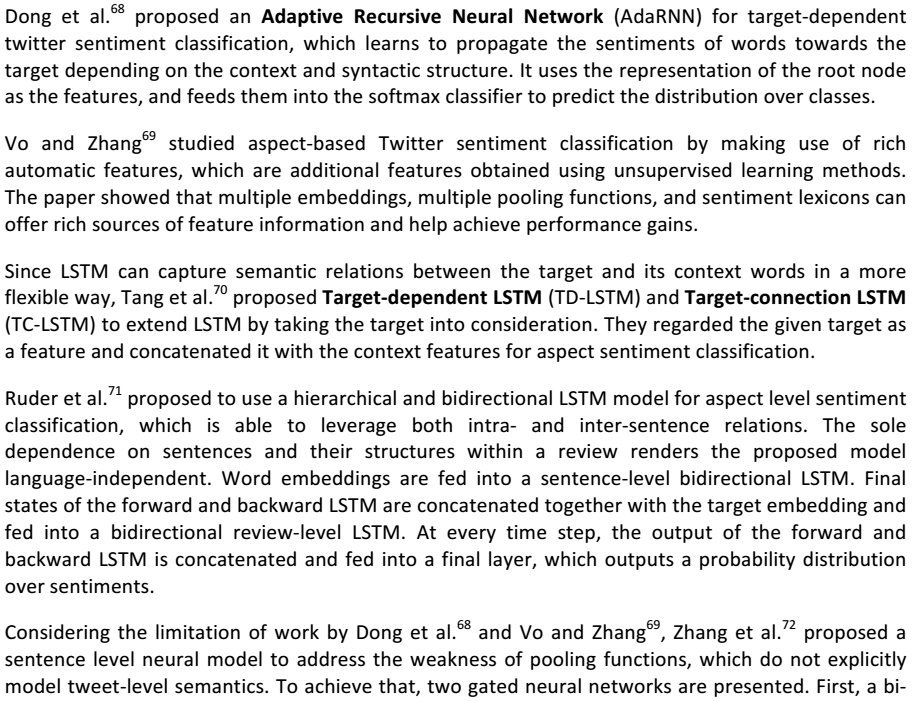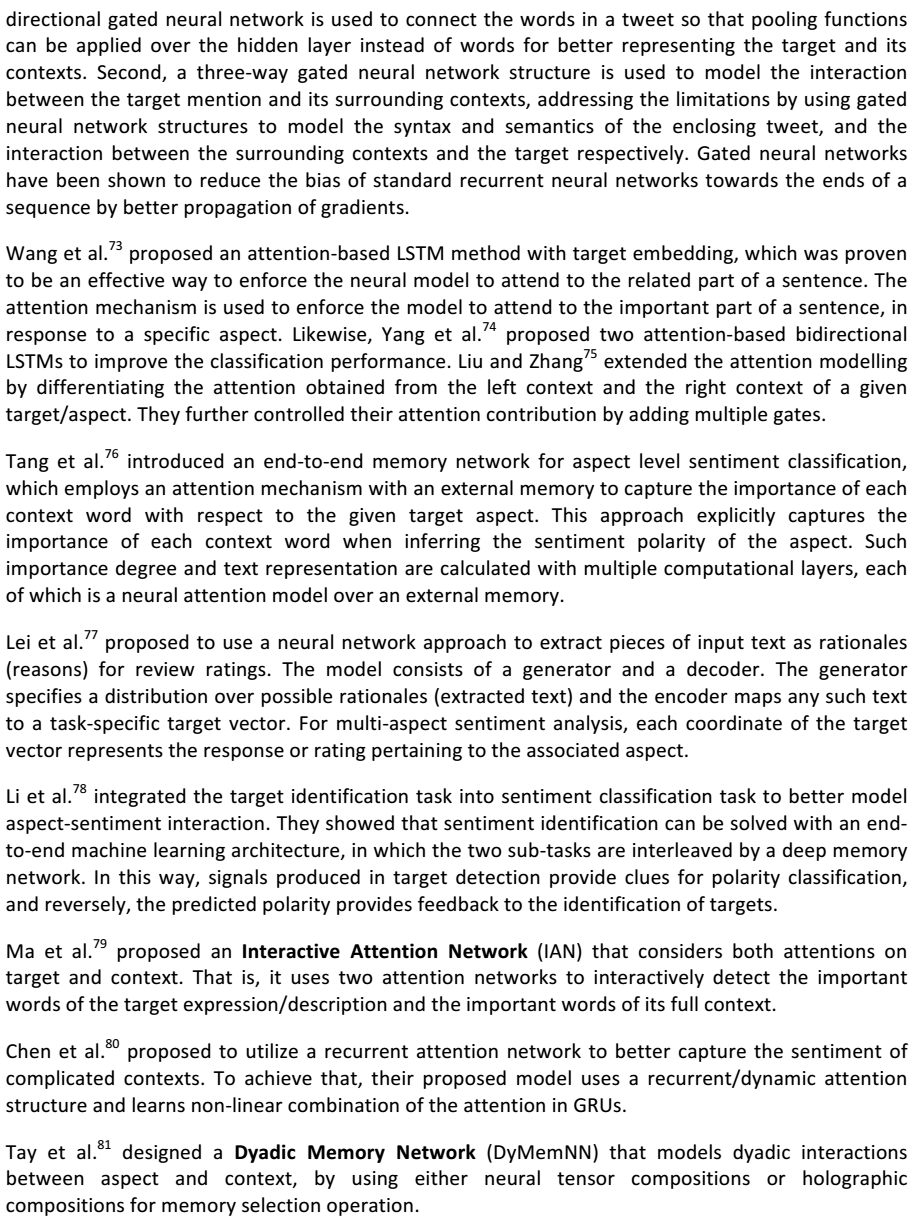深度學習情感分類常用方法(綜述)
論文原文:Deep Learning for Sentiment Analysis: A Survey
原文地址:https://arxiv.org/ftp/arxiv/papers/1801/1801.07883.pdf
(1)文件級情感分類:
主要方法如下圖所示:

(2)語句級情感分類
| Socher et al semi-supervised Recursive Autoencoders Network (RAE) 得到了一個降維句子向量表示 |
| Socher et al Matrix-vector Recursive Neural Network (MVRNN) 每個詞與樹結構中的矩陣向量相關(樹結構通過外部解析器獲得) |
| Socher et al Recursive Neural Tensor Network 基於張量的compositional functions可以更好地捕捉元素間的關係 |
| Qian et al ①Tag-guided Recursive Neural Network (TG-RNN) 根據語句的詞性標註選擇一個composition function ②Tag-embedded Recursive Neural Network / Recursive Neural Tenser Network (TE-RNN/RNTN) 學習tag embeddings,然後將tag embeddings和word emdeddings結合起來 |
| Kalchbrenner et al Dynamic CNN (called DCNN) 使用動態k-Maxpooling operator作為非線性二次取樣 |
| Kim CNN-rand: word embeddings隨機初始化 CNN-non-static:word embedding 預訓練並且fine-tuned CNN-multichannel: |
| Santos and Gatti Character to Sentence CNN (CharSCNN) |
| Wang LSTM 模擬詞語互動 |
| Wang et al CNN-LSTM a joint CNN and RNN architecture 短文字 |
| Guggilla et al LSTM- and CNN-based deep neural network model (Word2vec and linguistic embeddings) |
| Huang et al encode the syntactic knowledge (e.g., part-of-speech tags) in a treestructured LSTM to enhance phrase and sentence representation |
| Akhtar et al several multi-layer perceptron based ensemble models for fine-gained sentiment classification of financial microblogs and news. |

(3)Aspect Level(特徵級)情感分類
與文件級和語句級情感分類不同,特徵級情感分類需要同時考慮情感資訊和目標資訊。這裡的目標指的是實體或實體特徵,簡稱為aspect。
在深度學習情感分類中,Aspect Level情感分類可分為三個任務:
①表示目標的語境詞:可用文字表示方法解決
②生成目標表示:可用學習目標嵌入表示(與詞嵌入類似)
③識別特定目標的重要情感語境詞:可用注意力機制
eg: the screen of iPhone is clear but batter life is short.
‘clear'是'screen'的情感語境詞,對於目標特徵'screen'而言,則情感是積極的
‘short'是‘batter'的情感語境詞,對於目標特徵‘batter'而言,則情感是消極的
相關論文方法如下:


